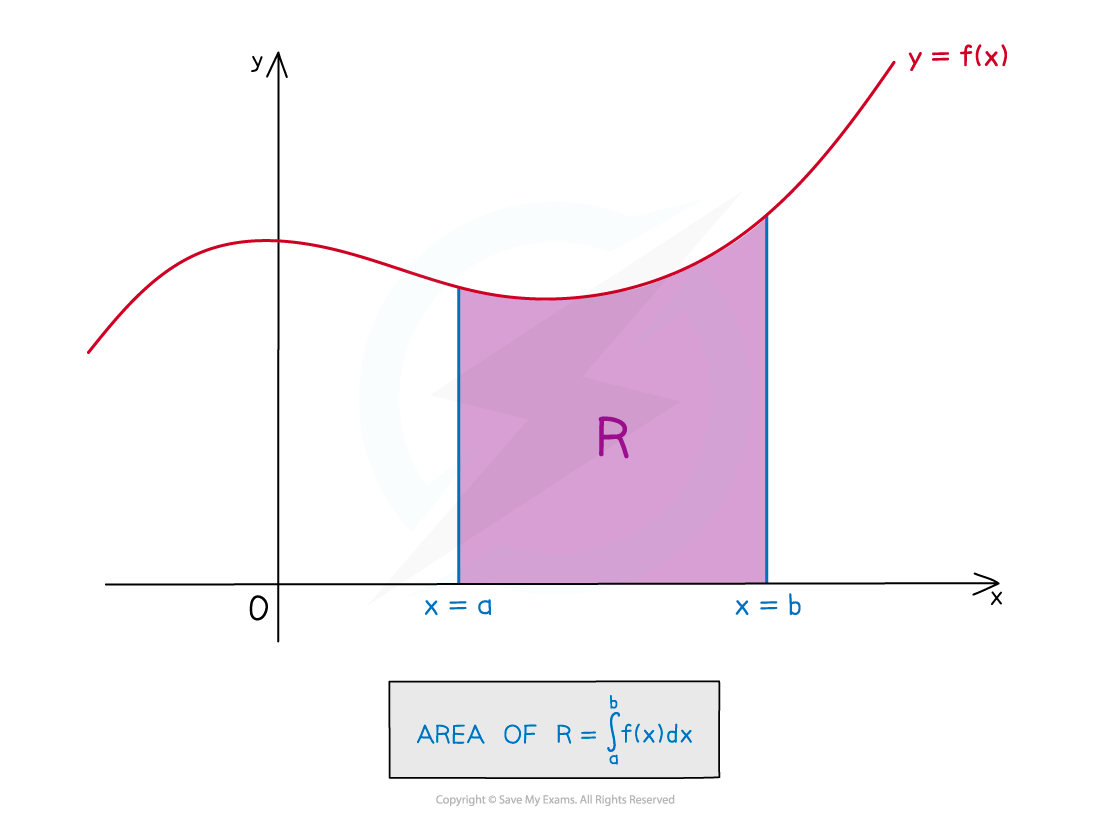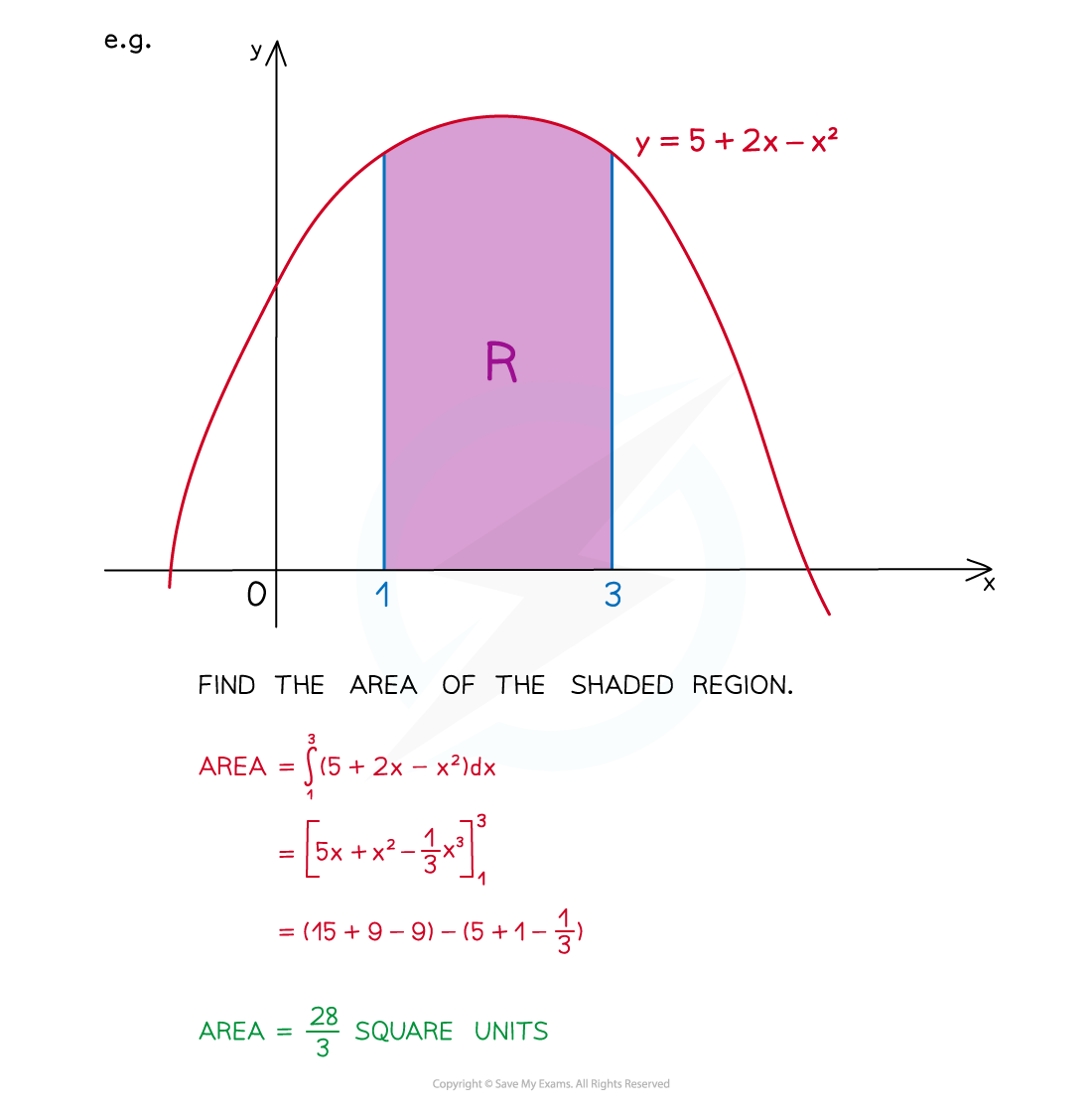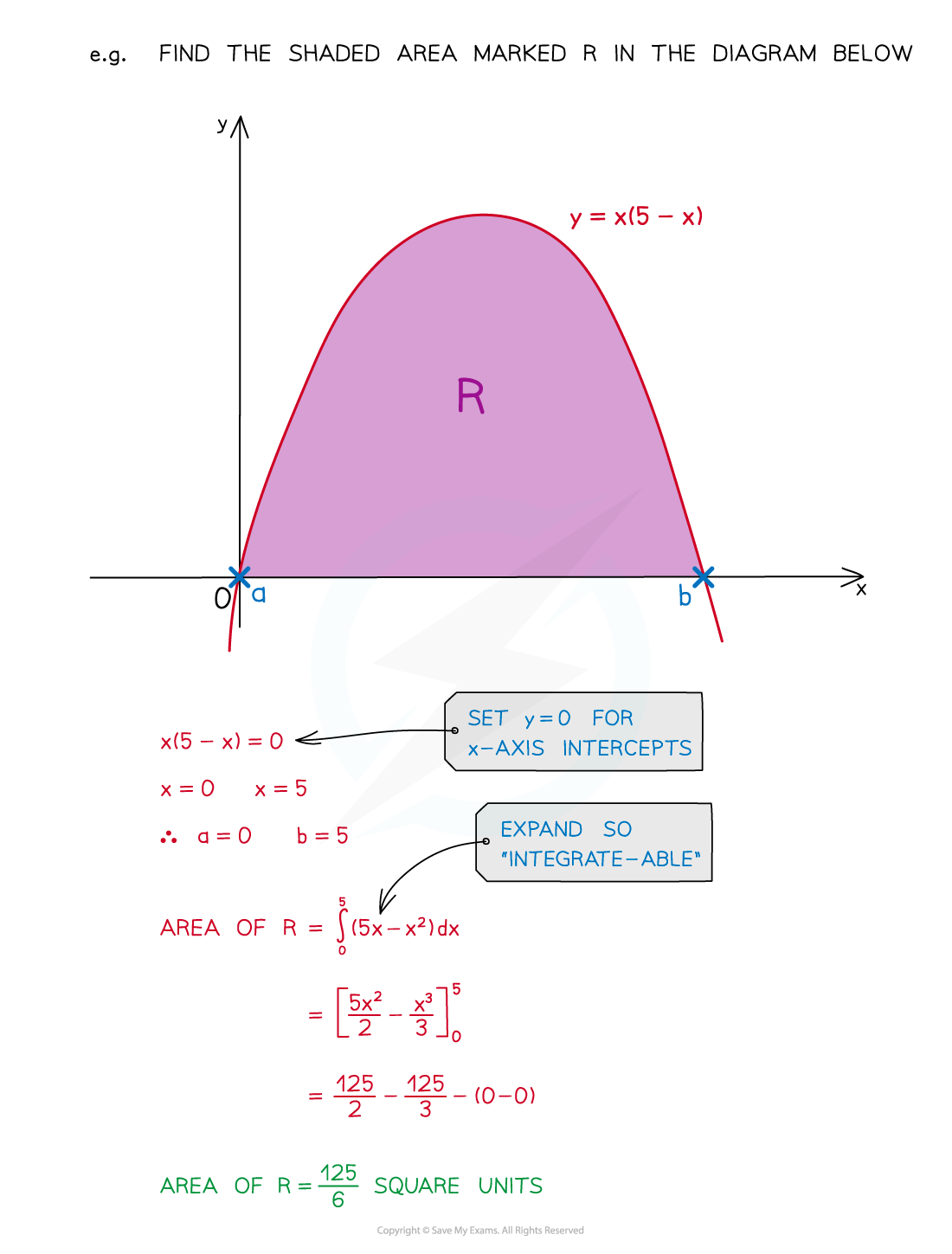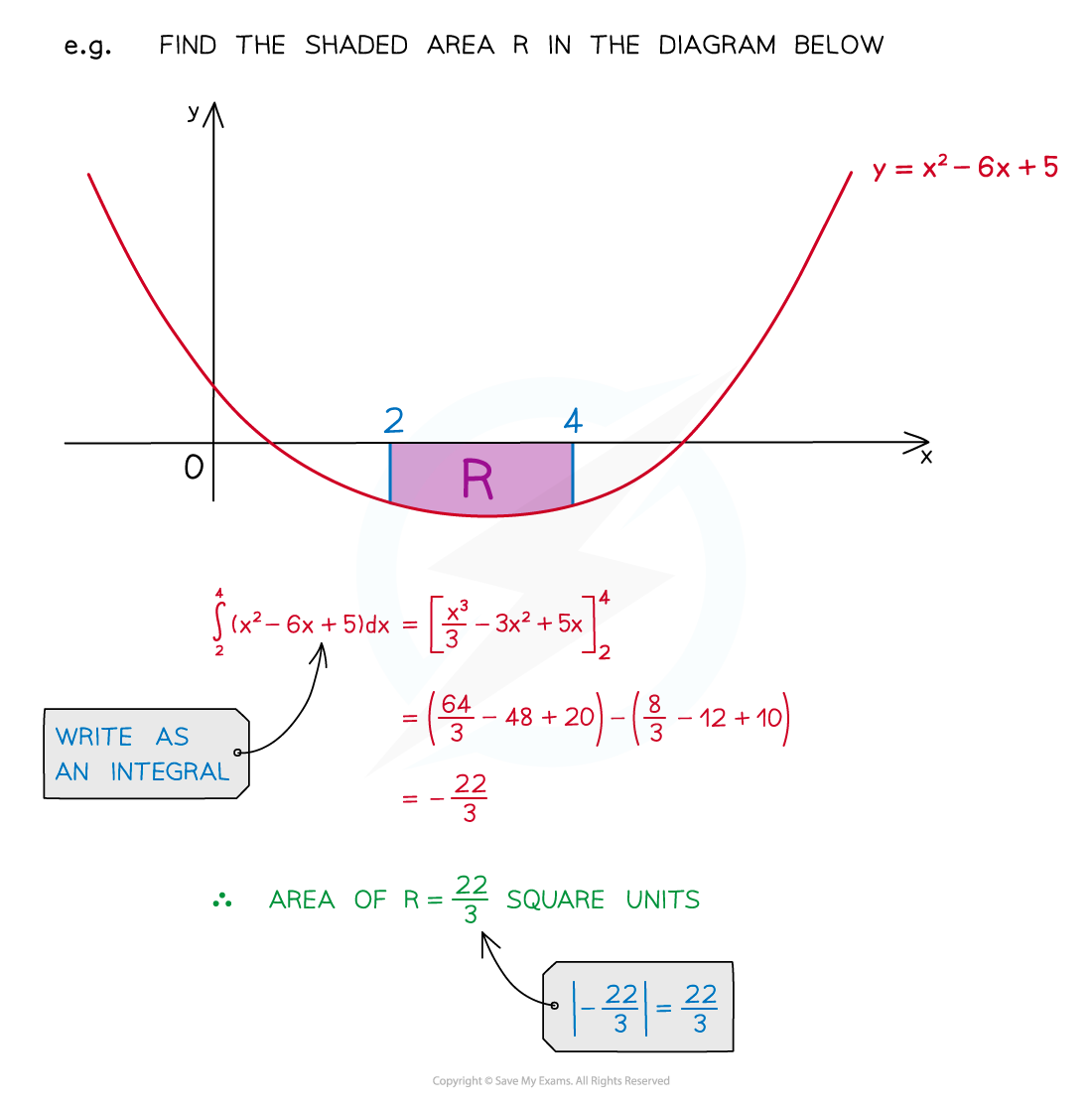Area Between a Curve & x-Axis (College Board AP® Calculus AB): Study Guide
Area between a curve & x-axis
How do I find an area between a curve and the x-axis?
The value found when calculating the definite integral of a function
with respect to
between
and
,
as long as
on the interval
is equal to the area between the curve and the
-axis between
and

Consider finding the area between the graph of
and the
-axis, between
and

This method of finding areas uses the idea of a definite integral as calculating an accumulation of change
is the area of a rectangle with height
and width
is the limit of this area element as
The integral
sums up all these infinitesimal area elements between
and
What if I am not told the limits?
If limits are not provided they will often be the
-axis intercepts
Set
and solve the equation to find the
-axis intercepts first

Remember that the
-axis (i.e.
) may also be one of the limits
When is the area integral negative?
If the area lies underneath the
-axis the value of the definite integral will be negative
However, an area cannot be negative
The area is equal to the modulus (absolute value) of the definite integral
If the area has some parts which are above the
-axis, and some which are below the
-axis
then see the method outlined in the 'Multiple Areas' study guide
Examiner Tips and Tricks
Always check whether you need to find the value of an integral, or an area.
When areas below the
-axis are involved, these will be two different values.


Unlock more, it's free!
Did this page help you?